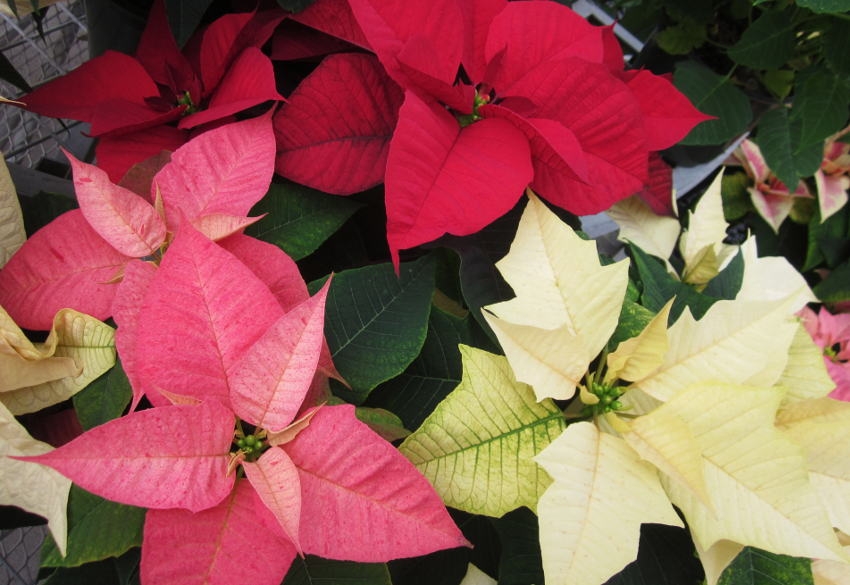Poinsettias are woody plants native to Mexico and, with a little care, can last for months or even years indoors.
We often get asked how long a poinsettia should last indoors. It's a difficult question to answer, but we often have customers coming back in March or April with their poinsettias still flowering. Growing all our poinsettias on-site reduces the stress on the plant considerably and increases the life of the plant right from the start.
The essential poinsettia care points:
- Keep your poinsettia away from any cold or warm drafts. Placing them near heat registers, doors, or windows is often a bad thing.
- Never transport a poinsettia without cold protection. Plastic covers do not protect much from the cold, paper sleeves are best.
- Don't let your poinsettia dry out. Once their leaves begin to curl or wilt, they will drop and not re-grow until next year.
- Don't let your poinsettia sit in water. Many decorative sleeves hold water so be sure to empty any excess water out after about 15 minutes after watering.
A number of factors can affect the flowering time and size of poinsettias. The variety has a quite large effect on flower time. Some start changing colour sooner than others. Finding a poinsettia that hasn't fully changed colour is one way to have it last longer since you know some blooms are yet to come. Very hot summers can sometimes delay flowering or make plants shorter than normal. In 2019 the heat delayed the colouring of some poinsettia varieties by a few weeks, while the summer of 2020 made some plants stumpy and short since they sat in a heat-stress mode for an extended period of time. In 2023, there have been more cloudy days making plants a little taller than wide. We often try to grow our plants cooler than most growers which creates a shorter plant that is sturdier, less brittle, and more intense colour, but with slightly reduced leaf size. Warm grown plants can become thin and brittle prone to cracking and breaking during transport. The larger leaves of warm grown plants often don't have the same colour saturation and can become pale. White poinsettias are more white with heat, and more yellow or lime when cool, but those plants often whiten up more in the home and last longer.
At home, you need to remember a few key points. Poinsettias hate cold temperatures. They don't like any drafts at all and even a very short time in the cold will cause the the plant to deteriorate. Keep the poinsettia away from heat registers or ducts and away from drafty windows or doors. Of course, never transport an unwrapped poinsettia, regardless of how warm it is outside. Just a short jot from the car to your home unwrapped in the cold will trigger the plant to start dropping leaves.
When poinsettias are in their flower stage, they really aren't actively growing. Starting in October or so, they shift from growing to flowering. That means light levels really aren't as critical this time of year. You can place them nearly anywhere in your home and they will have enough light, save for the darkest of closed rooms.
Poinsettias also like somewhat even moisture. If they dry out too much, they quickly drop leaves, so trying to keep a poinsettia evenly, but lightly moist is your best bet. Never let your poinsettia dry out, and also be sure it isn't saturated or doesn't sit in water. If you have a saucer, water the plant thoroughly so the water runs into the sauce, but empty the saucer within 15 minutes of watering so it's not sitting in water long-term. In the greenhouse, we often water poinsettias every two to four days depending on temperature and weather, but every location is different. It's always best to feel the soil with your finger and use the golden rule of watering: If it's dry, water it. If it's wet, don't.
Drooping leaves are a sign the poinsettia has gotten too cold or has been in an enclosed space too long, like a sleeve. Curling and dropping leaves happens most often when a poinsettia gets too dry. Poinsettias will often survive these conditions, but they will defoliate their lower leaves and not look as nice for the holiday season.
With those few simple rules, you can keep your poinsettias over the holidays quite easily and often into mid-January or even February and beyond.

